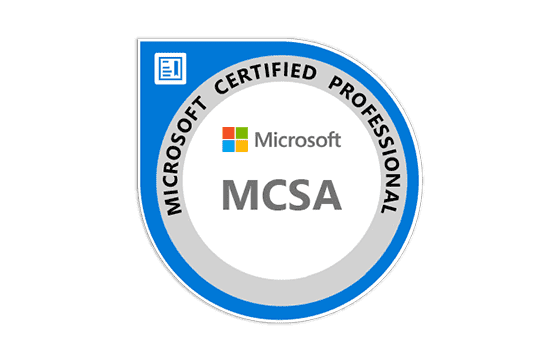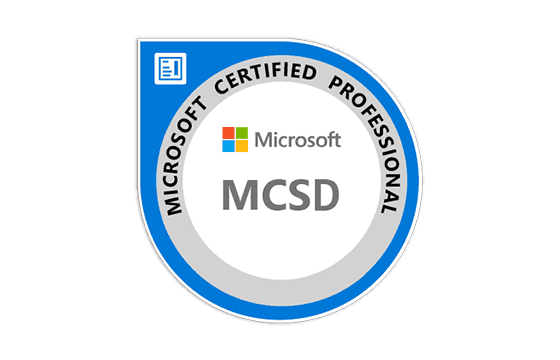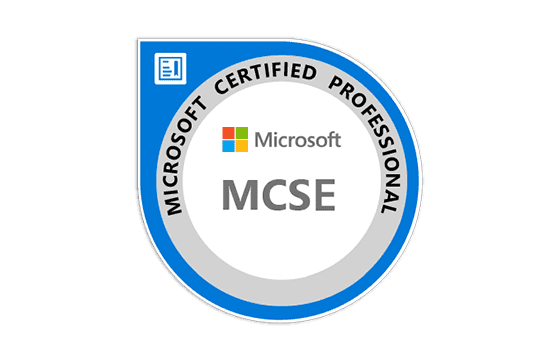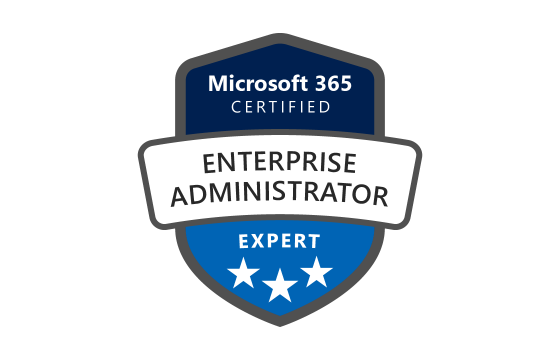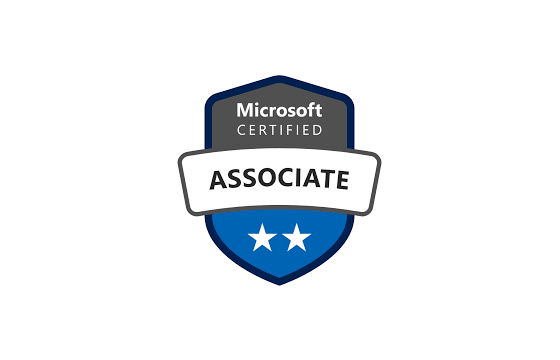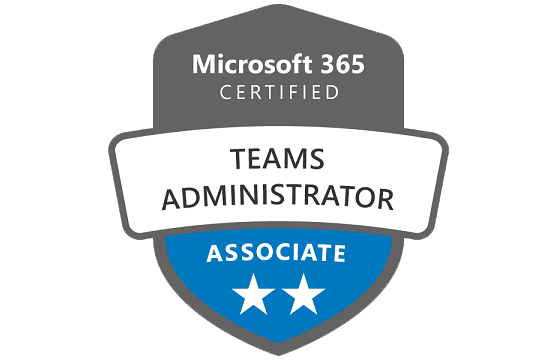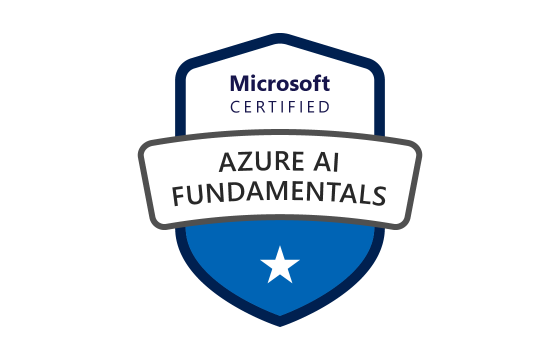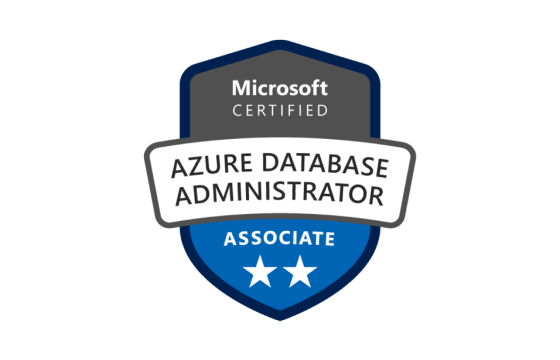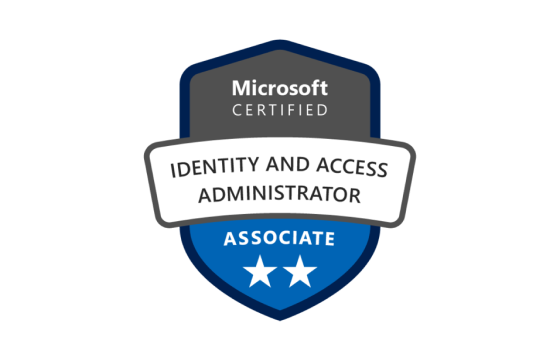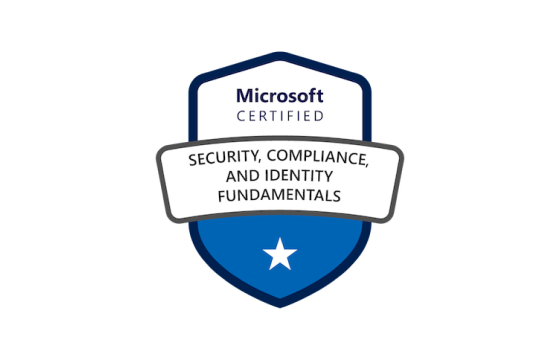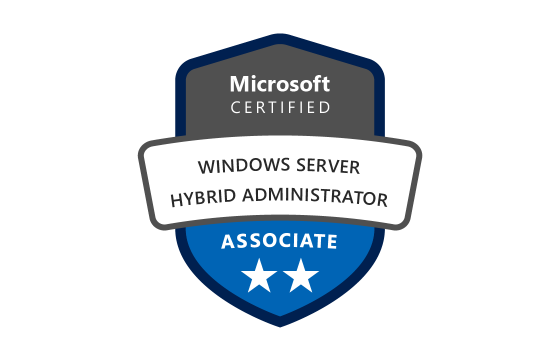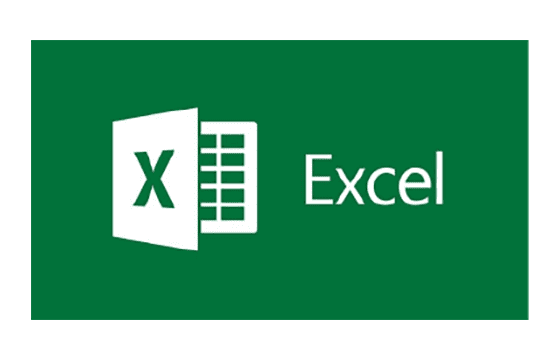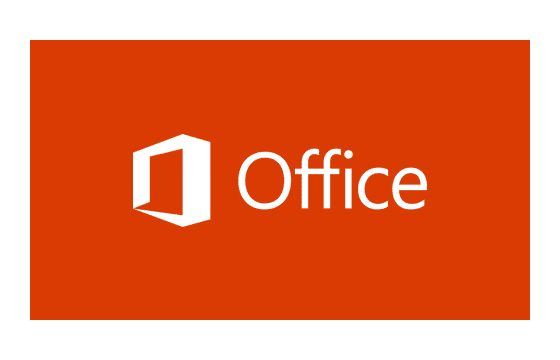Microsoft MS-721 Exam Dumps & Practice Test Questions
Question 1:
You have deployed Teams Phone using Direct Routing with a single Session Border Controller (SBC). Users report that outbound PSTN calls are failing, while inbound PSTN calls continue to work normally. Reviewing the SBC logs reveals that Microsoft responds to SIP OPTIONS requests but does not send any SIP OPTIONS requests itself.
What is the most probable cause of this issue?
A. The online PSTN gateway is disabled.
B. An SBC certificate has expired.
C. The SBC’s Fully Qualified Domain Name (FQDN) lacks a proper external DNS record.
D. User phone numbers are set by running the New-CsTeamsUnassignedNumberTreatment cmdlet.
Correct Answer: C
Explanation:
In a Microsoft Teams Phone deployment utilizing Direct Routing, the Session Border Controller (SBC) plays a vital role in bridging Microsoft Teams and the Public Switched Telephone Network (PSTN). The SBC manages signaling and media traffic, enabling inbound and outbound PSTN calls. If users are unable to place outbound PSTN calls while inbound calls function correctly, the problem often lies in the SBC’s network configuration or connectivity to Microsoft’s cloud services.
The key observation here is that Microsoft is responding to SIP OPTIONS requests but is not sending any. SIP OPTIONS messages are heartbeat signals used to verify availability and connectivity between endpoints. Microsoft’s lack of outgoing SIP OPTIONS indicates that the SBC is not fully reachable or registered from Microsoft’s perspective.
A common cause for this behavior is a missing or misconfigured external DNS entry for the SBC’s Fully Qualified Domain Name (FQDN). The SBC must be reachable via a correctly configured FQDN in external DNS because Microsoft’s cloud infrastructure relies on DNS to locate the SBC for sending signaling traffic, especially for outbound call initiation. If the external DNS record is missing or incorrect, Microsoft cannot route SIP messages to the SBC for outbound calls, even though inbound calls (initiated from the PSTN side) still work because those sessions start outside Microsoft’s DNS dependency.
Other options are less likely:
A disabled PSTN gateway would affect both inbound and outbound calls, not just outbound.
An expired SBC certificate typically causes complete call failure or security errors impacting both directions.
The New-CsTeamsUnassignedNumberTreatment cmdlet relates to handling unassigned numbers and does not cause outbound call failures.
To resolve this issue, verify that the SBC’s FQDN has a valid external DNS record pointing to the correct public IP address. This ensures that Microsoft Teams can successfully send SIP signaling to the SBC for outbound call routing, restoring outbound PSTN call functionality.
Question 2:
Your company’s sales team requires call routing to multiple users and wants to change call handling after business hours. Which two features should be implemented to fulfill these requirements? (Choose two.)
A. Call queues
B. Calling policies
C. Voice routing policies
D. Auto attendants
E. Caller ID policies
Correct Answers: A, D
Explanation:
In this situation, the sales department needs a solution that efficiently distributes incoming calls to several team members during business hours and routes calls differently after hours. To meet these needs, two Microsoft Teams calling features stand out: Call Queues and Auto Attendants.
Call Queues (A)
Call queues are designed to distribute incoming calls to a group of agents or users. When multiple sales team members need to receive calls, a call queue places callers in a waiting line until an agent is available. Calls can be routed based on availability, order, or other criteria, ensuring that incoming calls reach the right person promptly.
During business hours, the call queue directs calls to the available sales agents. After hours, the call queue can be configured to route calls differently—such as forwarding to voicemail, playing an announcement, or redirecting to another queue or service desk.
Auto Attendants (D)
Auto attendants provide an automated call answering service that greets callers and offers menu options or routes calls based on time or caller input. This feature allows flexible routing rules depending on whether it is business hours or after hours. For example, during office hours, the auto attendant can direct callers to the sales call queue, while after hours, it can send callers to voicemail or an informational message explaining office closure.
By combining call queues and auto attendants, the company can implement sophisticated call routing that adapts based on the time of day and caller needs.
Other options do not fit the requirements:
Calling policies (B) manage users’ call permissions, such as restricting international calls, but do not influence call routing to groups or time-based behavior.
Voice routing policies (C) determine how calls are routed through the PSTN at a network level, not user distribution or after-hours handling.
Caller ID policies (E) control how caller information is presented and do not affect call routing.
Therefore, implementing call queues for distributing calls among sales agents and auto attendants for time-based routing provides an effective, flexible solution for the sales team’s call handling requirements.
Question 3:
You have implemented Microsoft Teams Phone using Direct Routing with a certified Session Border Controller (SBC) whose Fully Qualified Domain Name (FQDN) is sbc1.contoso.com. The signaling port is set to 5067. Despite this setup, users cannot make calls, and an error message appears in the Microsoft Teams admin center (as shown).
What is the most likely cause of this problem?
A. Calling plan licenses are not assigned to users
B. The failover timer is configured to 0 seconds
C. Forward P-Asserted Identity (PAI) header is disabled
D. The Baltimore or DigiCert root certificates are missing on the SBC
Correct Answer: D
Explanation:
In a Microsoft Teams Direct Routing deployment, the Session Border Controller (SBC) serves as a crucial intermediary between Teams and the external telephony network (PSTN). The SBC must be correctly configured to ensure secure signaling and media transmission, and it requires valid SSL/TLS certificates to establish trust with Teams.
The error preventing users from placing calls, accompanied by the Teams admin center message, usually points to a connectivity or security issue involving the SBC. One of the common root causes in such situations is missing root certificates on the SBC, specifically the Baltimore or DigiCert root certificates.
Why are these root certificates important?
Microsoft Teams requires the SBC to present a certificate that can be validated by trusted root certificate authorities (CAs). Baltimore CyberTrust Root and DigiCert are two such widely recognized root CAs whose certificates must be installed on the SBC to validate its identity during the TLS handshake. If the SBC does not have these root certificates installed, Teams will not trust the SBC’s certificate. This leads to failed TLS negotiations, blocking call signaling and media sessions, which ultimately results in call failures.
Why the other options are less likely?
Calling plan licenses not assigned (A): If licenses were missing, users might be unable to make PSTN calls, but the error would be licensing-related and not about connectivity or certificates.
Failover timer set to 0 (B): This controls how quickly the system switches to backup routes. While it might cause intermittent call failures, it wouldn’t cause all calls to fail outright with a certificate-related error.
Forward PAI header disabled (C): Disabling the P-Asserted Identity header affects caller identity presentation and routing in certain scenarios but doesn’t prevent call establishment entirely.
Ensure that the Baltimore or DigiCert root certificates are properly installed and trusted on the SBC device. This step allows Microsoft Teams to validate the SBC’s certificate, establishing a secure, trusted connection and resolving call failure issues.
Question 4:
In a Microsoft Teams Phone deployment, you have two users: User1 and User2. User1 is scheduled to be on leave for two weeks. You want to forward all calls made to User1’s number directly to User2’s number with minimal administrative overhead.
Which setting should you configure for User1 to achieve this?
A. Voicemail transfer target settings
B. Call delay and order settings
C. Call delegation settings
D. Phone number type
Correct Answer: C
Explanation:
The requirement is to forward all incoming calls from User1 to User2 during User1’s two-week absence. The best way to do this efficiently, without complex configuration or ongoing management, is through call delegation settings in Microsoft Teams.
What is call delegation?
Call delegation allows one user (the delegator) to assign another user (the delegate) to receive and handle calls on their behalf. This means all calls made to User1 can be automatically redirected to User2, who acts as a delegate, ensuring seamless call handling even when User1 is unavailable.
Why is call delegation ideal here?
Minimal setup: You only need to specify User2 as a delegate in User1’s settings.
No need for routing rules: Unlike call queues or complex forwarding rules, delegation is straightforward and tailored for individual user forwarding.
Temporary and easily reversible: When User1 returns from leave, delegation can be turned off quickly without reconfiguring multiple settings.
Live call forwarding: Delegation forwards actual live calls, unlike voicemail or other message forwarding options.
Why are other options less suitable?
Voicemail transfer target settings (A): This only redirects voicemail messages, not live calls, so it doesn’t fulfill the requirement.
Call delay and order settings (B): These control how calls are routed when multiple recipients are involved (e.g., hunt groups or call queues) but don’t apply to simple one-to-one forwarding scenarios.
Phone number type (D): This setting designates the type of number (e.g., direct or voicemail) but doesn’t control call routing or forwarding.
For redirecting all calls from User1 to User2 with minimal effort, modifying the call delegation settings for User1 is the most efficient and effective approach. This ensures User2 receives all User1’s calls during their leave, maintaining continuity without administrative complexity.
Question 5:
You have a call queue called "Customer Service" in your Microsoft Teams Phone setup. You want outbound calls made by agents in this queue to display the caller name as "Contoso" and show the phone number of the Customer Service queue as the caller ID. At the same time, other users’ caller ID settings should remain unchanged.
Which three actions must you take to achieve this? (Choose three.)
A. Create a new caller ID policy in the Microsoft Teams admin center.
B. Set the Calling Party Name to the organization’s name.
C. Modify the global (Org-wide default) caller ID policy in the Microsoft Teams admin center.
D. Configure "Replace the caller ID with" to use the resource account.
E. Enable the override caller ID policy option.
Correct Answers: A, D, E
Explanation:
In Microsoft Teams Phone systems, customizing caller ID for specific groups, such as a call queue, requires precise configuration to avoid affecting other users. Here, the goal is to ensure calls from Customer Service agents show the queue’s phone number and the name "Contoso," while leaving others untouched.
Step 1: Create a new caller ID policy (A).
The first step is to establish a new caller ID policy dedicated to the Customer Service queue. This policy isolates the caller ID behavior for this group only, so you don’t interfere with the global or other users’ settings. Without a dedicated policy, changes would apply universally, which is not desired.
Step 2: Set caller ID replacement to resource account (D).
Call queues are backed by resource accounts in Teams, which hold the phone number and caller identity. By setting the caller ID to be replaced with the resource account, calls made by agents within the queue display the queue’s number instead of the individual agent’s number. This ensures consistency and proper branding.
Step 3: Enable override of caller ID policy (E).
The override option must be enabled to force the system to apply the newly created caller ID policy specifically for the call queue, regardless of other default or user policies. Without this override, the global or user-level policies might supersede your custom settings.
Why the other options don’t fit:
B (Calling Party Name set to organization name): This affects all outbound calls organization-wide and lacks the granularity needed here.
C (Modify global caller ID policy): Changing the global policy impacts every user and is too broad for this use case.
In summary, creating a new caller ID policy tailored to the queue, replacing the caller ID with the resource account number, and enabling override ensures outbound calls from Customer Service agents show "Contoso" and the queue phone number without affecting other users.
Question 6:
Your organization operates offices in London and Vancouver, both using Microsoft Teams Phone with Calling Plans. A user named User1 is relocating from the London office to the Vancouver office.
What should you do first to update User1’s phone number and emergency location appropriately?
A. Execute New-CsTeamsEmergencyCallingPolicy for Vancouver.
B. Change User1’s Usage Location setting.
C. Apply the Vancouver emergency calling policy using Grant-CsTeamsEmergencyCallingPolicy.
D. Add a new emergency location for User1.
Correct Answer: B
Explanation:
When a user moves between geographic locations within an organization using Microsoft Teams Phone with Calling Plans, several adjustments are necessary to ensure phone functionality and emergency services work correctly. The most critical initial step is updating the user’s Usage Location.
What is Usage Location and why update it first?
Usage Location in Microsoft Teams (and Office 365 broadly) specifies the user’s geographical region. This setting directly impacts license assignment, phone number provisioning, emergency calling configurations, and compliance with regional regulations. For example, emergency call routing differs by country, so the system must know the user's current location to comply with local laws.
In this case, since User1 moves from London (likely set as UK) to Vancouver (Canada), you must first modify User1’s Usage Location to Canada. This update triggers the correct allocation of Calling Plan licenses and routes emergency calls appropriately.
Why not the other options first?
A. New-CsTeamsEmergencyCallingPolicy: This command creates a new policy but does not apply it or affect existing users immediately. You need to set the user’s location first so the right policies apply.
C. Grant-CsTeamsEmergencyCallingPolicy: This command assigns a policy to a user but should be done after updating the Usage Location so the policy corresponds to the user's actual location.
D. Add a new emergency location: Emergency locations define the physical address used for emergency services. You must ensure the user's Usage Location matches before setting or updating emergency locations to avoid inconsistencies.
After changing Usage Location:
Once the usage location is set correctly, proceed to update User1’s emergency location to the Vancouver office address, ensuring emergency calls are routed properly. If required, assign a new phone number suitable for Vancouver.
In conclusion, changing the Usage Location is the foundational step in user relocation scenarios within Microsoft Teams Phone. It aligns licensing, number assignment, and emergency configurations to the new geographic location, paving the way for subsequent updates to emergency calling policies and phone numbers.
Question 7:
When developing a Microsoft Teams app that requires real-time messaging and collaboration, which Microsoft technology should you use to enable communication between clients and the backend services?
A. Microsoft Graph API
B. Azure SignalR Service
C. SharePoint Framework (SPFx)
D. Azure Logic Apps
Correct Answer: B
Explanation:
In Microsoft Teams app development, enabling real-time communication—such as chat, notifications, or presence updates—is critical for a seamless user experience. Among the options, Azure SignalR Service is specifically designed to handle real-time messaging scenarios by providing a scalable, low-latency communication channel between clients and backend services.
Azure SignalR Service acts as a real-time messaging hub that allows your Teams app’s backend to push updates instantly to connected clients. For example, when a user sends a message or a presence state changes, SignalR ensures that all other clients subscribed to those events receive the information immediately without polling or delays. This is especially useful for collaboration features like live chat, notifications, and collaborative editing.
Let's consider why the other options are less suitable:
Microsoft Graph API is a RESTful API that provides access to Microsoft 365 services, such as user profiles, calendar, files, and Teams metadata. While it supports messaging features, it is not designed for real-time push communication but for querying and sending data through HTTP requests.
SharePoint Framework (SPFx) is a client-side development framework mainly used for building SharePoint web parts and extensions. Although SPFx can be integrated with Teams, it is not directly related to real-time communication services.
Azure Logic Apps is a workflow automation tool for integrating apps, data, and services. It’s excellent for automating business processes but doesn’t provide low-latency, real-time communication features.
In summary, when your Teams app needs to support real-time messaging and collaboration, Azure SignalR Service provides the necessary infrastructure for live updates between the backend and client applications, making Option B the correct choice.
Question 8:
You are building a Microsoft Teams app that needs to display personalized task lists for users. Which API would you use to retrieve the user's tasks stored in Microsoft To Do and Planner?
A. Microsoft Graph API with delegated permissions
B. Microsoft Teams Bot Framework SDK
C. Azure Cognitive Services
D. Microsoft Power Automate connectors
Correct Answer: A
Explanation:
When developing a Teams app that needs to access and display user-specific data—such as tasks from Microsoft To Do and Planner—the Microsoft Graph API is the primary interface to interact with Microsoft 365 services.
Microsoft Graph provides RESTful endpoints to access a wide variety of Microsoft 365 data, including tasks from Planner and To Do. By leveraging delegated permissions, the app can act on behalf of the signed-in user to read and manipulate their tasks securely and with user consent.
Here’s why Microsoft Graph API is the best choice:
Unified access: Microsoft Graph consolidates APIs for multiple services, including Planner and To Do, enabling you to fetch tasks from both sources using a single API endpoint.
Security and consent: Using delegated permissions ensures that users explicitly consent to the app accessing their data, aligning with Microsoft’s security model.
Rich query support: Graph API supports filters, sorting, and paging, allowing efficient retrieval and display of relevant task data.
The other options are not designed for this purpose:
Microsoft Teams Bot Framework SDK is used for building conversational bots within Teams, but it doesn’t provide direct access to user task data.
Azure Cognitive Services offers AI and machine learning capabilities, such as speech, vision, and language processing, but it doesn’t manage or retrieve user task data.
Microsoft Power Automate connectors enable workflow automation but aren’t APIs that directly return task data within a Teams app.
Therefore, to retrieve and manage user-specific tasks from Microsoft To Do and Planner, the Microsoft Graph API with delegated permissions is the appropriate and effective choice, making Option A the correct answer.
Question 9:
You are developing a Microsoft Teams app that includes a custom tab. The tab needs to display dynamic content based on user interactions and communicate with the Teams client to update UI elements in real time.
Which Microsoft Teams SDK feature should you use to enable this interactive communication between your tab and the Teams client?
A. Teams Activity Feed API
B. Teams Client SDK with Microsoft Teams JavaScript library
C. Microsoft Graph API
D. Teams Webhooks
Correct Answer: B
Explanation:
In Microsoft Teams app development, especially when creating custom tabs, enabling interactive communication between your web content (tab) and the Teams client is essential for building dynamic, responsive user experiences. The Microsoft Teams JavaScript SDK, often referred to as the Teams Client SDK, is the core feature that allows this kind of interaction.
The Teams SDK provides a JavaScript library that your tab can embed, enabling it to communicate directly with the Teams client. This communication supports functionalities like accessing user context, interacting with Teams UI elements, navigating between pages, and responding to Teams events. It is specifically designed to work within the Teams client environment to facilitate rich user interactions.
Option B (Teams Client SDK) is correct because it allows your tab to send and receive messages, update UI elements, and handle events in real time.
Option A (Teams Activity Feed API) is used primarily for sending notifications to users through the activity feed but does not provide interactive, in-tab communication.
Option C (Microsoft Graph API) allows accessing data from Microsoft 365 services (like users, groups, files) but does not facilitate direct UI communication inside a tab.
Option D (Teams Webhooks) are used for posting messages to Teams channels from external services and don’t support client-side interactivity in tabs.
Hence, when you need to build an interactive Teams tab that updates dynamically based on user input or system events, the Teams Client SDK with the Microsoft Teams JavaScript library is the most appropriate choice.
Question 10:
You are creating a Microsoft Teams messaging extension that needs to provide search results from an external service and allow users to insert these results as adaptive cards into a chat.
Which component must you implement to handle the search queries and respond with adaptive cards?
A. Bot Framework Messaging Extension Search Handler
B. Microsoft Graph Change Notifications
C. Teams Activity Feed API
D. Teams Webhook Connector
Correct Answer: A
Explanation:
In Microsoft Teams, messaging extensions enable users to interact with external data and insert content directly into their conversations. When you want to provide a searchable interface that queries an external service and returns results users can insert, you need to implement the Messaging Extension Search Handler using the Bot Framework.
The Messaging Extension Search Handler listens for search commands issued by users in the compose message area. Upon receiving a search query, it queries the external data source, formats the results, and responds with cards—often adaptive cards—that users can preview and insert into chats or channels.
Option A (Bot Framework Messaging Extension Search Handler) is correct because it is the backend logic responsible for processing search queries, fetching results, and constructing responses that Teams can display and insert.
Option B (Microsoft Graph Change Notifications) are used to subscribe to changes in Microsoft 365 data and do not relate to handling search queries in messaging extensions.
Option C (Teams Activity Feed API) is for sending notifications and does not handle search or insert content functionality.
Option D (Teams Webhook Connector) posts messages from external services into channels but is unrelated to interactive search or adaptive card insertion.
Therefore, to build a messaging extension that searches external content and returns adaptive cards, you must implement a Messaging Extension Search Handler via the Bot Framework, making option A the right choice.
Top Microsoft Certification Exams
- AZ-104
- AI-900
- AZ-305
- DP-700
- AI-102
- PL-300
- AZ-900
- MD-102
- AZ-500
- MS-102
- SC-401
- SC-300
- AZ-700
- SC-200
- AZ-204
- MS-900
- DP-600
- SC-100
- PL-200
- AZ-400
- AZ-140
- PL-600
- AZ-800
- SC-900
- AZ-801
- MS-700
- PL-400
- DP-300
- PL-900
- DP-900
- MB-280
- MB-800
- MB-330
- DP-100
- GH-300
- MB-310
- MB-820
- MB-700
- MB-230
- MS-721
- MB-910
- MB-920
- PL-500
- MB-335
- MB-500
- MB-240
- DP-420
- GH-200
- GH-900
- AZ-120
- DP-203
- GH-100
- SC-400
- GH-500
- MB-900
- 62-193
Site Search:




